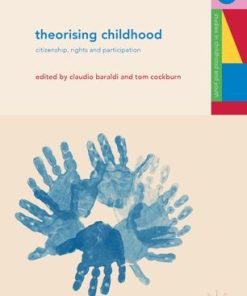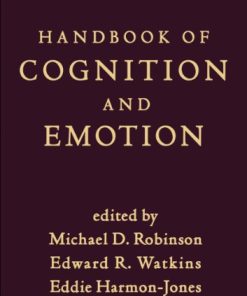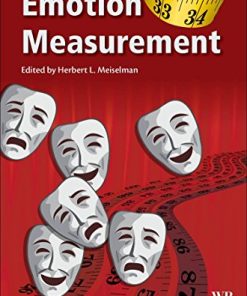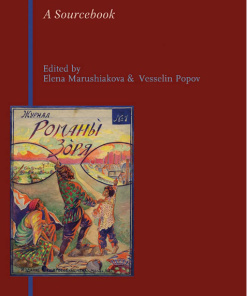(Ebook PDF) Roma Music and Emotion 1st edition by Filippo Bonini Baraldi 0190096810 9780190096816 full chapters
$50.00 Original price was: $50.00.$25.00Current price is: $25.00.
Roma Music and Emotion 1st edition by Filippo Bonini Baraldi – Ebook PDF Instant Download/DeliveryISBN: 0190096810, 9780190096816
Full dowload Roma Music and Emotion 1st edition after payment.
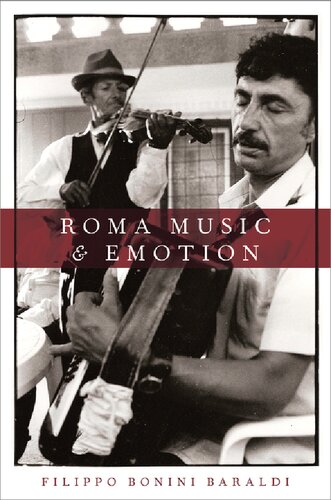
Product details:
ISBN-10 : 0190096810
ISBN-13 : 9780190096816
Author: Filippo Bonini Baraldi
In Roma Music and Emotion, author Filippo Bonini Baraldi forges a much-needed theory of music, emotion, and empathy from an anthropological perspective, addressing the failure of the prevailing psychological theories on music and emotion to account for non-western musical cultures. Bonini Baraldi, having spent years among the Hungarian Roma of rural Transylvania, presents compelling ethnographic descriptions of their weddings, funerals, community celebrations, and intimate family gatherings. Based on extensive field research and informed by hypotheses drawn from the cognitive sciences, the anthropology of art, and aesthetics, Roma Music and Emotion analyzes why Roma musicians cry along with music and how they arouse specific feelings in their audiences. Translated by Margaret Rigaud, and with a Foreword by Steven Feld, Roma Music and Emotion makes an important ethnomusicological contribution to theoretical discussions of the relationship between music and emotion.
Roma Music and Emotion 1st Table of contents:
Part 1: Musical Emotions: When and Why Do they Arise?
Section 1: Performing for Others, Performing for Oneself
1. The professional ethics of the Roma musicians of Ceuaş
Customer service
“Stay in your place”
Emotion makers?
2. Village celebrations
A Hungarian banquet in Ceuaş
I
II
III
A Roma wedding in Laslău Mic
I
II
III
Similarities and differences
3. How to make music work, how to arouse emotions
How to make music work
Playing for every “nation”
Playing for every “region”
Playing for each “person”
A flexible conception of the repertoire
The emotion at the end of the festivities
Making music resonate deep within the soul of the customers
The emotions of the musicians
4. After the “service”: Time to party in ţigănie
The drive back home
Back in ţigănie
The tears of the musicians
The after-parties that follow the service
5. Other occasions when musical emotions can arise in ţigănie
Minor official celebrations
A baptism among friends
At home
At home with Csángáló, a professional musician (A3)
At home with Béla, an amateur musician (A4)
At home with Ikola, a semiprofessional singer (A5)
Crying with music in ţigănie
6. A musical experience of being inwardly torn apart
The supărare
In your head and heart
“Affecting” and “affected” characters
The emotions behind the tears
Nostalgia?
Ancestor worship?
“Brothers in song”?
Feeling inwardly torn apart
Performing for others, performing for oneself
Section 2: Performing for the Dead, Arousing Pity in the Living
7. Funerals and the politics of emotion
A new configuration of the world
The living and the dead
The ceremonies
Great men versus lesser men
The musicians
“Relatives” versus “outsiders”
Crying “with full throat” versus crying “inside”
Unfixed categories
The politics of emotion
The emotional dimensions of the funeral ritual
The dead versus the living: piety versus fear
The relatives versus outsiders: pity versus shame
The space of ritual actions
8. The soundscape of a funeral wake
A heterogeneous soundscape
Analysis of the soundscape of a funeral
Crying “with full throat”: a case study
Transcriptions
Textual analysis
The acoustic characteristics of the weeping voice
Musicological analysis
Instrumental music
A suite with a rising tempo
The song of the deceased: playing for one, playing for them all
Relational musical emotions
Conclusion
Part 2: Why Do the Roma of Ceuaş Cry with Music?
9. Musical emotions in the Roma community of Ceuaş: A concentric model
Comparing the three contexts of musical tears
My model’s weaknesses and strengths
The invariants of musical emotion
10. Performing sorrow
De jale tunes: a case study
The irregularities of the aksak rhythm
Rhythmical measures using sound analysis
Method
Data coding
Results
Rhythmical measures using motion capture
Method
Data coding
Results
Discussion on aksak measures
Asynchronization between melody and accompaniment
Measuring asynchronies by using motion capture
Method
Data coding
Results
Discussion on asynchronization
The effect of “sweetness” created by the phrasing and ornamentation
Two studies on musical sweetness
Method
Results
Discussion on sweetness
De jale tunes: conclusion
11. Personal tunes
“That’s my tune!”
To “own” a song, it has to be “in your heart”
Methodological clarifications
What the Roma of Ceuaş have to say about their own personal melodies
What the Roma of Ceuaş have to say about the melodies of others
Uncertain musical identities
12. Being milos
The milă: a way of being and behaving
“Roma are more miloşi”: an emotional minority?
The milă and musical emotion
Part 3: Music, Emotion, and Empathy
13. What is musical empathy?
Empathy and music: conceptual frameworks
Ethnomusicological perspectives on empathy
Intersubjective empathy
Aesthetic empathy
Gestural empathy and embodied musical cognition
The usefulness of theories of empathy
14. Toward an anthropological approach to musical empathy
Alfred Gell and music
“Art and Agency”
Applying Gell’s model to music
Anthropological perspectives on musical empathy
Emotion, empathy, and agency
The referent of musical empathy
Empathy with the “musical being”
Empathy for the artist
Empathy for musical memory-images
Intersubjective musical empathy
The performance context
Personal melodies and distributed persons
Becoming attached to a de jale tune
Conclusion
Roma music and emotion
Epilogue
Glossary
Bibliography
Discography
Filmography
People also search for Roma Music and Emotion 1st:
roma music academy
roma music group
roma music
roma musica
aroma music group
You may also like…
Politics & Philosophy - Social Sciences
Politics & Philosophy
History - Ancient History
Roma Victa: Rome’s way of dealing with defeat Simon Lentzsch
Uncategorized
Uncategorized




